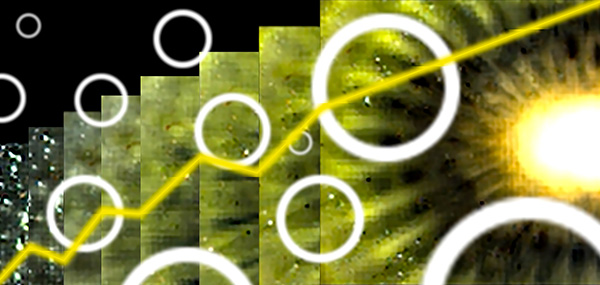Scientists use ordinary cameras to measure inner surfaces from subsurface scattering light
Kyoto University researchers report at the 15th European Conference on Computer Vision a new imaging algorithm that explains how it is possible to imagine the internal surface of an object when only the external surface is observed.
Importantly, the method avoids complex and costly equipment, only requiring a simple projector and camera.
Hold your hand up to a light. Around the finger nails you will see the color vanish, but take the hand away from the light and suddenly the color will look no different than the rest of the finger. This effect is known as subsurface scattering. While light reflects off a solid surface, it will scatter along the surface of a translucent surface. You can see this effect in your finger, a dog’s ear, or the surface of grape. By observing the scatter, it becomes possible to learn about the surface structure lying underneath. However, measuring this scatter requires costly equipment.
“Most methods require time-of-flight or ultra-fast cameras. But these cameras are difficult to apply if only observing an object from the outside,” says Ko Nishino, Professor at the Graduate School of Informatics.
Nishino is attempting to realize computer vision by recapitulating human visual processing. While the most advanced technological cameras can measure subsurface scattering with extraordinary accuracy, they do so differently than the human eye, which can only see the outside of the object.
As the light scatters, energy is absorbed causing its color to change and the light to change direction. These changes, known as transient subsurface scattering, provide information about the subsurface, including the composition and shape.
“We took each surface point and illuminated it with ring lights of varying radii. By taking the difference between the variable ring images, we could compute transient subsurface scattering at each surface point. We can then measure the light propagation and reconstruct the internal surface that is otherwise invisible,” explains Nishino.
The researchers applied their algorithm to observe the inner surface of various fruits including kiwi, oranges, and strawberries, capturing both the color and structure.
“Variable ring light imaging successfully captured the inner surfaces of several arbitrary real-world objects. This technique can be utilized to decipher a richer scene of understanding in computer vision,” Nishino concludes.

The new algorithm observes the scattering of light on an object, and then computes the structure lying underneath (Kyoto University/Nishino Lab)
Paper information
【DOI】 https://doi.org/10.1007/978-3-030-01252-6_37
Ko Nishino, Art Subpa-asa, Yuta Asano, Mihoko Shimano, Imari Sato (2018). Variable Ring Light Imaging: Capturing Transient Subsurface Scattering with an Ordinary Camera. Lecture Notes in Computer Science, 11215, 624-639.
Related link
- Variable Ring Light Imaging Capturing Transient Subsurface Scattering with An Ordinary Camera
- Computer Vision Laboratory





